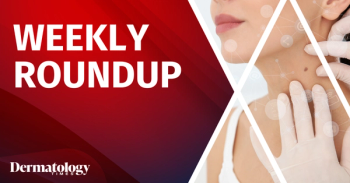
Summer Skin Care and Sunscreen Guidance for Patients with Acne
Key Takeaways
- Sun exposure may cosmetically improve acne short-term but poses long-term risks like keratinocyte carcinomas and hyperpigmentation, especially in Fitzpatrick skin types III–V.
- Non-comedogenic, oil-free, mineral-based sunscreens with micronized zinc oxide are recommended to avoid acne exacerbation and ensure photostability.
Sonia Batra, MD, dispels common myths and shares expert tips on summer skin care for acne, emphasizing sun protection and tailored regimens.
In a recent interview with Dermatology Times, Sonia Batra, MD, dual board-certified dermatologist, micrographic dermatologic surgeon, and clinical assistant professor at USC Keck School of Medicine, provided valuable insights into managing acne-prone patients during the summer months, with a focus on sunscreen selection and skin care regimens.
Batra, who founded her own practice in Santa Monica, California, addressed two prevalent misconceptions among patients. First, the notion that sun exposure improves acne. While ultraviolet light can exert short-term anti-inflammatory effects and tans may cosmetically conceal lesions, she emphasized the long-term dermatologic risks. Chronic UV exposure not only increases the risk of keratinocyte carcinomas but can exacerbate post-inflammatory hyperpigmentation, particularly in Fitzpatrick skin types III–V. Clinicians should counsel patients on these risks, reinforcing that any short-term cosmetic improvement comes at a significant cost to long-term skin health.
“So I have to say it may look a little bit better in the short term, but in the long term, you're really fueling harm and damage, so please don't go that route. That's the big one that I hear about a lot in Southern California,” Batra advised.
The second common misconception is that sunscreen universally worsens acne. Batra recommends guiding patients toward non-comedogenic, oil-free, and lightweight formulations. Educating patients to look for phrases like “non-acnegenic” and “won’t clog pores” on labels can help mitigate resistance to sunscreen use and improve adherence, especially with seasonal humidity and increased sweat. From a formulation standpoint, Batra favors mineral-based sunscreens, particularly those containing micronized zinc oxide, citing their lower irritancy potential and greater photostability. She also advises avoiding formulations with common sensitizers such as fragrance and comedogenic oils like coconut, particularly in acne-prone patients.
In terms of seasonal skin care, Batra emphasized gentle, thorough cleansing to remove sweat, sebum, and environmental debris without disrupting the barrier function. She noted the importance of adjusting regimens that include retinoids or AHAs/BHAs, given their photosensitizing effects. Nighttime use and reduced frequency—while still maintaining consistency—can enhance tolerability without compromising efficacy. Among non-prescription options, Batra highlighted
Newsletter
Like what you’re reading? Subscribe to Dermatology Times for weekly updates on therapies, innovations, and real-world practice tips.


















